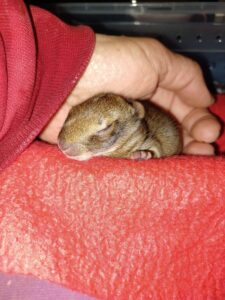2023 baby season has started with a real boing- the rabbits are coming in daily. So far I've been able to keep people from kidnapping them, but in the case of dog- or cat-caught babies, they always need to come into care, even if they have a Mom nearby.
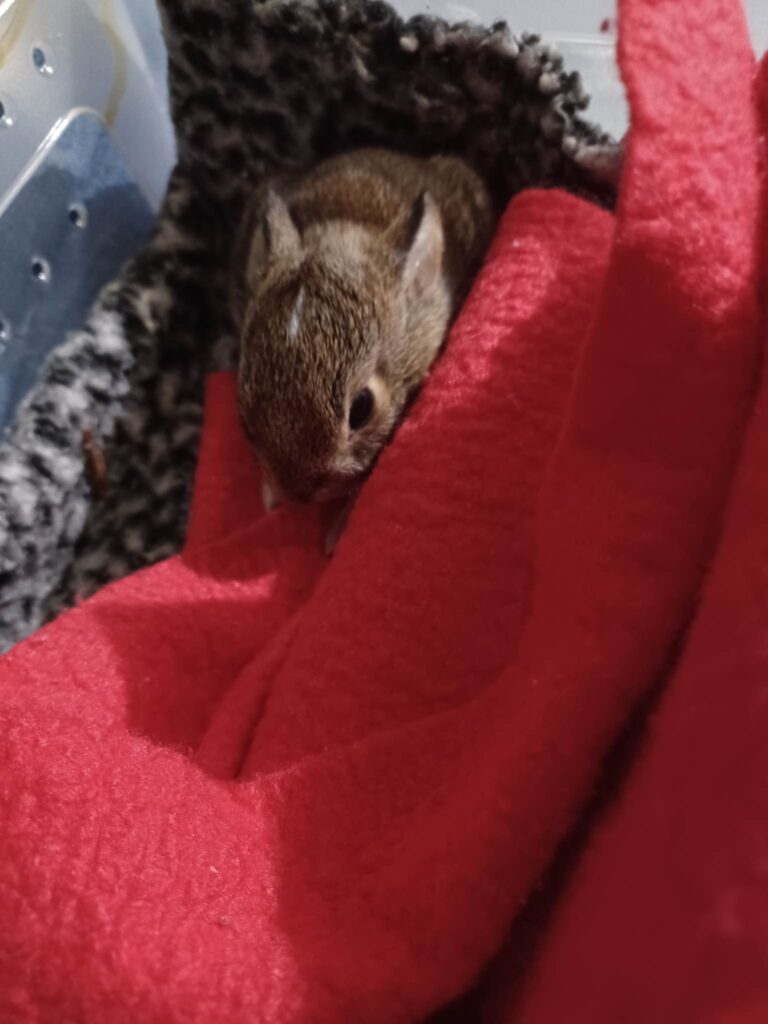
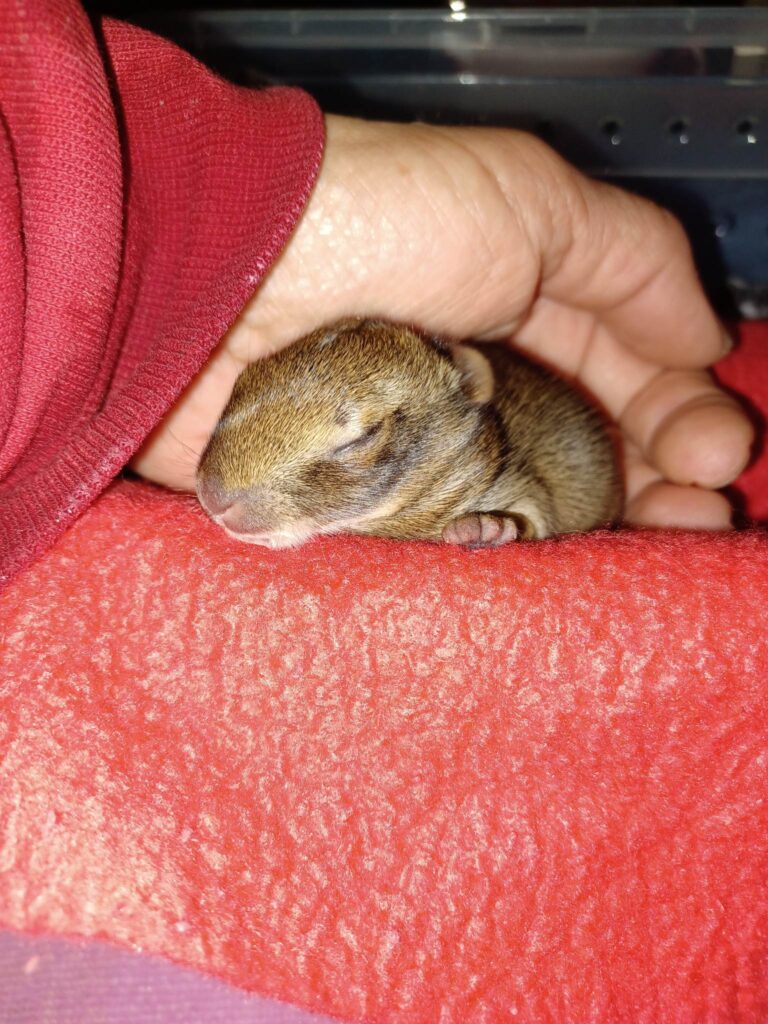
Eastern Cottontail rabbits
Cottontail rabbits are considered one of the harder species to rehabilitate because they are a prey creature highly sensitive to stress.
They are also very likely, due to their ground-nesting behavior, to be caught and harmed by cats and dogs.
Between the trauma of nearly being eaten and being transported away from Mom, and the inexact milk replacer we have to give them, managing their care and diet is a delicate affair.
For more information on what to do if you find a baby bunny, check my blog post here.
Eastern Gray squirrels
I have a running joke, with myself mostly, that I don’t take in squirrels or raccoons.
But obviously, I do!
While my local rehab colleague was out of town on family business, I accepted these cute little guys until she returned.
One was found in the middle of a driveway by a dog, eyes still closed.
The other two fell out of their nest, or were knocked loose, and the finders were unable to reunite them with Mom.
For more information on what to do if you find a baby squirrel, check out my blog post here.
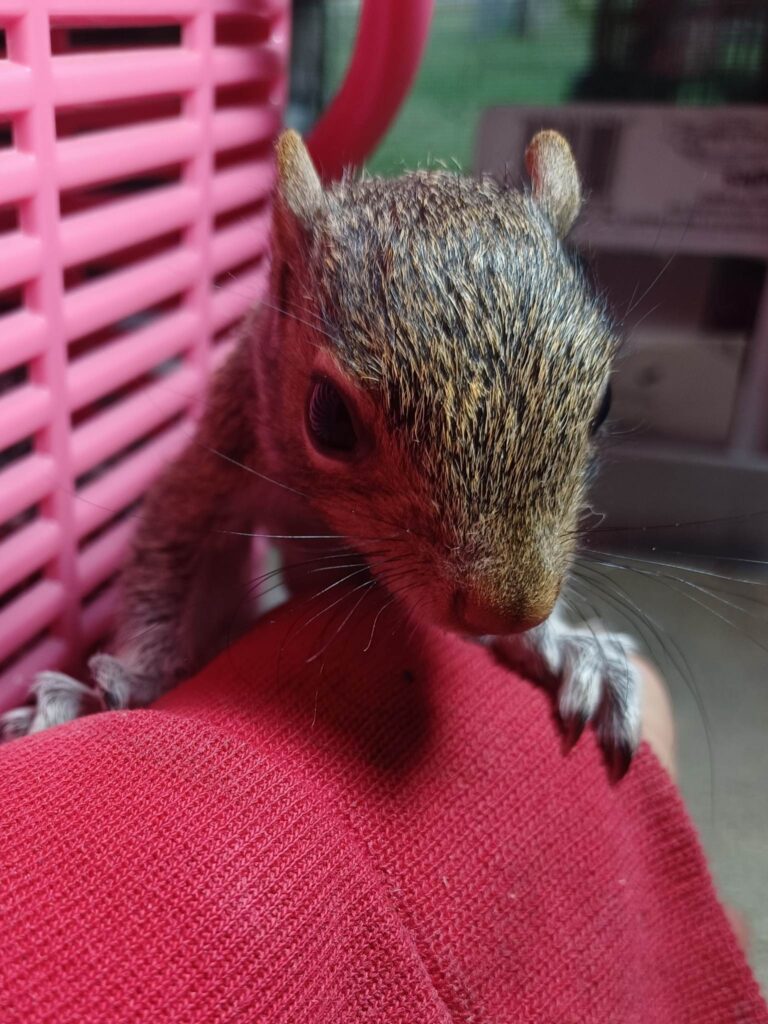
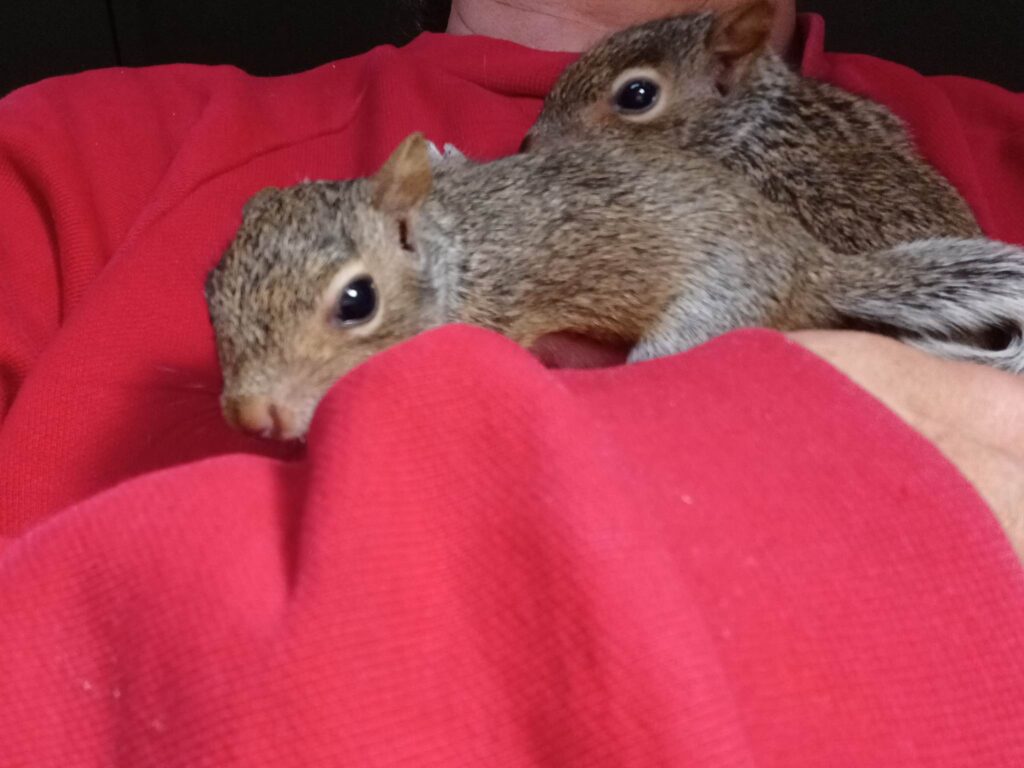
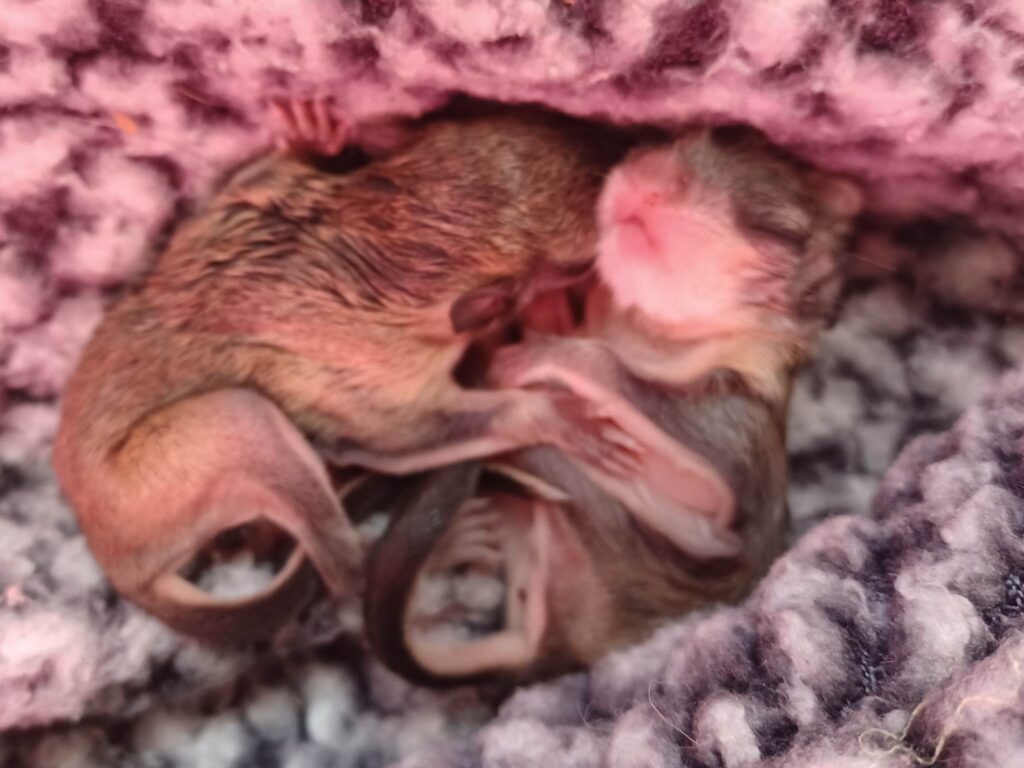
Southern Flying squirrels
These two here are baby flying squirrels.
Flying squirrels are a very small, nocturnal omnivorous squirrel that people rarely see. They are a colony species, with many individuals sharing the same hollow in a tree or old bird house.
Flying squirrels don’t have actual wings. They have skin that stretches from their front legs to their back legs, which acts like sails, and a flat-furred tail which acts like a rudder. Instead of climbing up and down trees and running along the ground like Gray squirrels, they glide from tree to tree.
These two were knocked out of their nest and were unable to be reunited.
Red fox
It’s been over a month and I still have Miss Fox.
We haven’t been able to determine what’s wrong with her. She’s been treated with antibiotics, received a rabies vaccine, and is now in the largest of my outside enclosures. She’s still comfortable with me- not necessarily tame.
I’ve reached out to multiple rehabbers for advice on whether she can be “re-wilded”, that is, to give her the opportunity to revert to her innate wild state. Others say her behavior indicates an underlying illness or afflication which we haven’t detected or treated.
She’s going back to the vet Monday for more in-depth bloodwork.
Not every animal I receive comes with a donation, although I do include that area on the form finders fill out. Miss Fox is racking up quite the bill and the finders declined to donate. Any help with her continued care is very welcome! I have PayPal and Venmo donation links at the top of the page.
All animals receive the same level of care regardless of whether they came with a donation or not. Not everyone is in a position to help out, and I don’t decline animals based on funding.
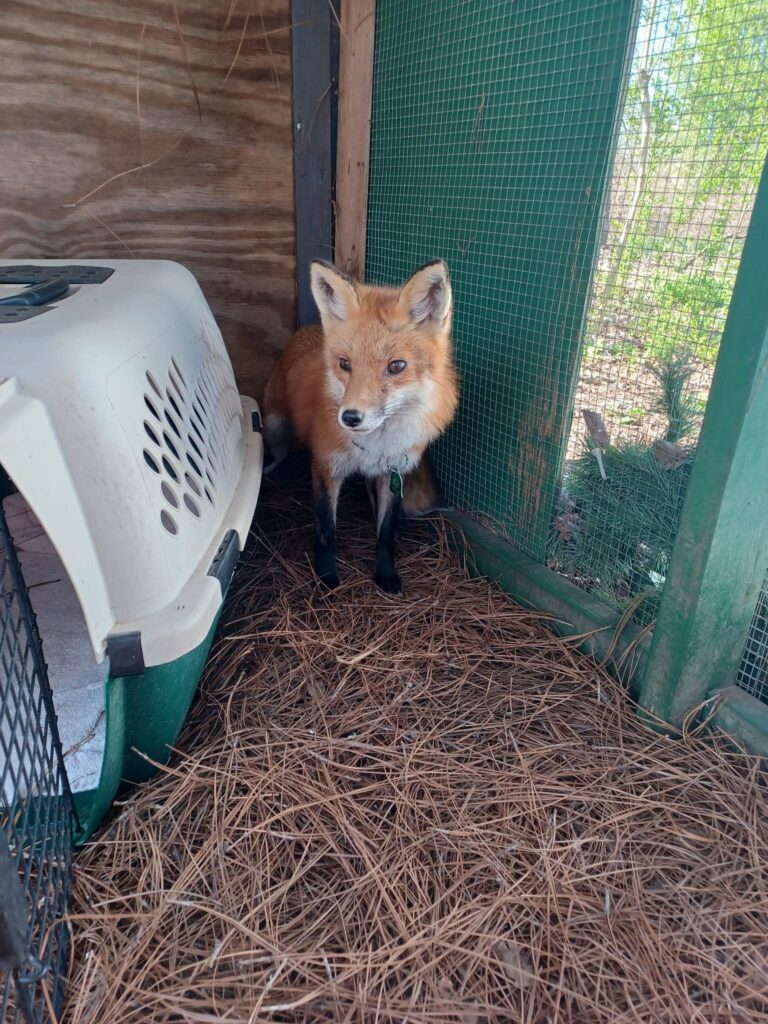
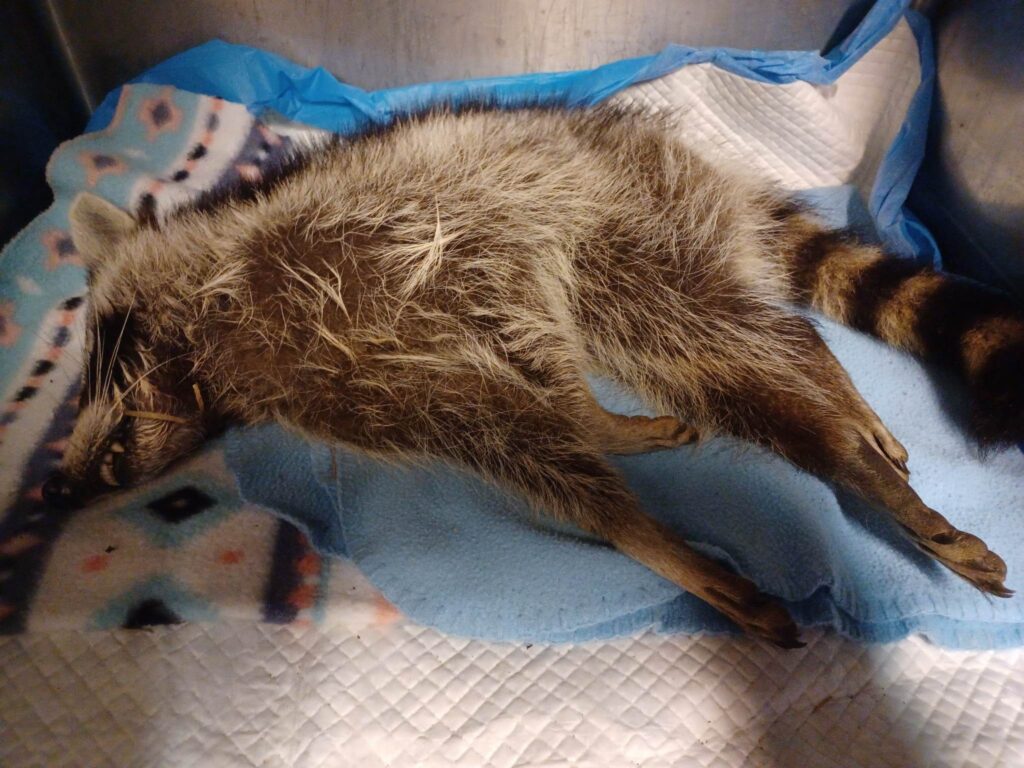
Raccoon
This poor young adult female raccoon was found in an Athens yard, lying just like this and barely breathing.
The finders were cautious and didn’t touch or approach her, but kept an eye on her and called me.
NEVER touch or let your pets near a raccoon, fox, skunk or bat acting oddly. Rabies is a real threat and is fatal.
I don’t see any injuries related to being hit by a car, and she doesn’t have any eye or nose discharge which might indicate distemper, a disease very similar to our flu.
In animals, distemper is almost always fatal, and survivors can suffer neurological effects for the rest of their lives.
Her right side limbs are frozen in place, and she can’t move. I’ve given her pain medication and fluid therapy.
There is a likelihood she is suffering from end stage rabies and I will have to have her put to sleep. I don’t want her to continue suffering.
House Finch
On a happy note, this female House finch came in with suspected “House Finch Eye Disease”, known medically as mycoplasma conjunctivitis. The finder noticed she was flailing around in flight and was able to catch her.
She started treatment with terramycin opthalmic ointment and provided supportive care with easily accessible food and water.
Mycoplasma conjunctivitis causes an itchy crust to form on finches’ eyes, preventing them from seeing well. It is highly contagious, being passed on to other birds when the victims rub their itchy eyes on perches. If you see House finches with crusty eyes, please take down your feeders and soak them in a mild bleach solution.
It’s a virus so there isn’t a simple medication we can give them. Tylosin tartrate can be put in drinking water, but it’s prohibitively expensive for one bird.
Supportive care with warmth, an easily navigable cage with plenty of food and water is how I usually treat it.
She recovered quickly and went back home, where she VERY happily flew off into her flock.






